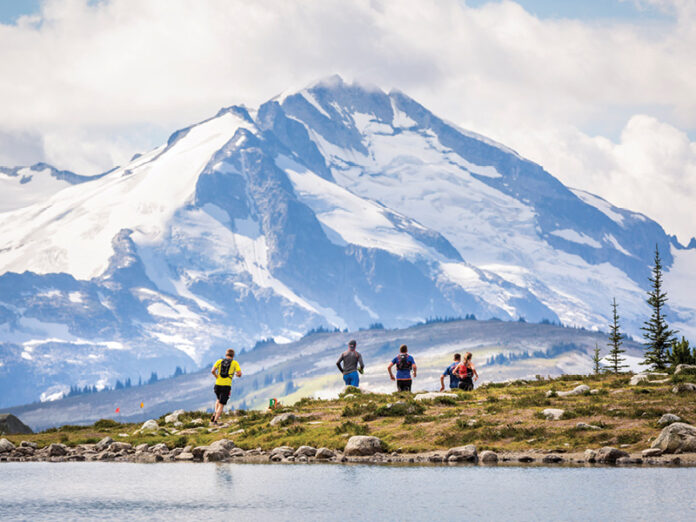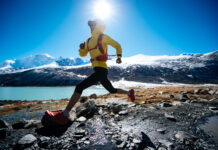
When runners train at high elevation and then race at sea level, they feel like rock stars who can run at top speed with ease, forever…
The physiology behind the supposed magic is that there are fewer oxygen molecules at high altitude. The body detects this decrease and responds by producing more red blood cells to carry oxygen to the muscles. To experience any meaningful physiological changes, the minimum exposure to altitude requires about 10 days and the elevation must be above 2,000 metres.
Upon descent from altitude to sea level, with higher volumes of oxygen in the air, muscles receive a boost from the abundance of red blood cells which creates that feeling of euphoria. To reap the benefits of altitude training, it’s best to compete within four days of arrival at sea level, says Louis Passfield, adjunct professor at the University of Calgary specializing in exercise physiology.
However, even though it feels wonderful, physiologists worldwide say there is no conclusive evidence that altitude training actually improves performance at sea level. This is especially true for sea level runners who pop up to altitude to train. A decrease in training quality should be expected at altitude because the running is slower, explains Passfield. And, after four to five days back at sea level the adaptations and benefits gained at altitude start to significantly dissipate.
The inverse is interesting. Altitude exposure works in your benefit when you’re competing at altitude, so spending as much time at altitude beforehand is recommended.
While many of Canada’s top runners have been known to temporarily relocate to high altitude locales, it’s not in preparation for sea level races, but rather to make their training more challenging.
“I think high-altitude training is beneficial in that it mixes up your training and adds another element of discomfort that you can overcome and then use to your advantage next time you race,” Says Reid Coolsaet, two-time Olympic marathoner who recently moved from Hamilton to Boulder, Colorado located at an elevation of 1,624 metres.
But there are many Olympic coaches who strongly believe in the strategy/correlation between altitude training and performance.
“It’s one of those things where you wonder if the scientists are measuring the wrong things and the practitioners know something from experience and intuition that the scientists do not,” says Passfield.
Since 2011, Coolsaet has trained seven times at the High Altitude Training Centre in Iten, Kenya. Situated at 2,400 metres, it’s known as a running mecca, attracting the world’s best. It took him about five days to acclimatize on each trip, starting with easy runs where he kept his breathing and heart rate low. Only once, in 2015, did he travel directly from Kenya, on a Thursday, to race a sea level marathon in Rotterdam, on a Sunday. He placed seventh with a time of 2:11:24 which qualified him for the 2016 Rio Olympics.
Was his stellar performance a direct result of his altitude training? Coolsaet says no, counting it as one factor along with the essentials of distance and speed work, proper sleep and nutrition, recovery, and tapering.
So while altitude training remains a consistent part of many athletic programs, the magic might be more a result of hard work, talent and preparation than anything else.
















